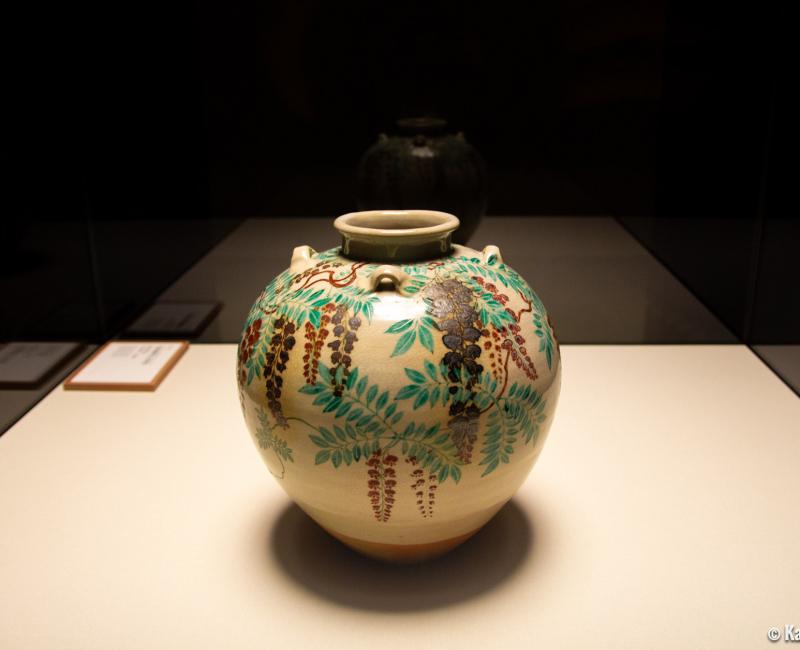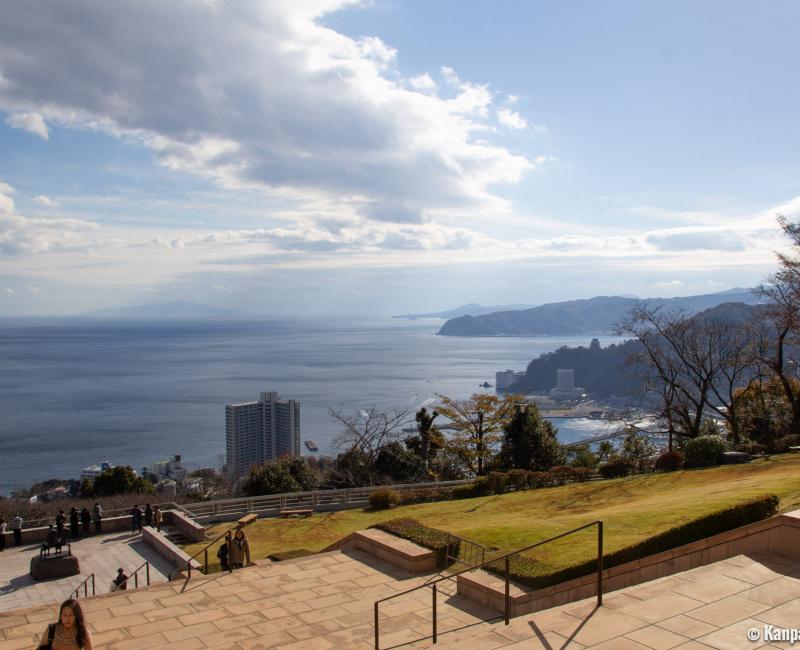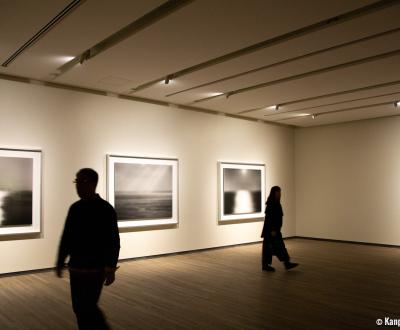MOA Museum of Art
National Treasures on the Heights of Atami
MOA Museum of Art is a private art gallery located on the heights of Atami, in Izu peninsula. Its founder Mokichi Okada gathered three National Treasures of Japanese art, as well as about sixty artworks deemed Important Cultural Property. This precious heritage is sheltered above Sagami Bay in a bright building offering a wonderful view on the surroundings.
MOA Museum of Art opened in 1982 and displays part of the artworks collection gathered by Okada Mokichi (1882 - 1955), who also founded Hakone Museum of Art in 1952. The present days’ building was renovated in 2015 under Hiroshi Sugimoto and Tomoyuki Sakaki's direction. The visit combines the artistic beauty of the displayed objects and the highlight of natural landscapes.
The visit starts by a long escalator leading to the first large room, The Circular Hall, whose ceiling is ornamented by a giant kaleidoscope, an artwork by Mitsuru and Yuriko Yoda. Before going to the exhibition rooms, stop a moment in the main hall to have a look on Atami and the coastal line. Part of the garden below, at the end of the visit course, is also visible.
The first must-see of the museum is the faithful reproduction of the golden tearoom made for Toyotomi Hideyoshi in 1586, to hold tea ceremonies with the emperor in Kyoto. On the same floor, a Noh theater also welcomes plays on a regular basis. The course continues through three spaces where wonderful cups and utensils for tea ceremony are exhibited.

A refined and varied art collection
The collection is eclectic with various objects from China and Japan, such as ceramics and calligraphies, but also Buddhist statues, wonderful paintings on folding screens and kakemono. Some are absolute must-see:
- The tea-leaf jar with wisteria design, by Nonomura Ninsei (17th century) is one of the museum’s National Treasures. The jar is exhibited alone in a dark room, with an underneath lighting, which highlights the colors and details of the decorative wisteria painting design.
- Several paintings and calligraphies of poems from various eras: Heian (794 - 1185), Muromachi (1336 - 1573) and Edo (1603-1868) periods.
- A whole area is dedicated to Buddhism with small but very detailed sculptures. Some of the displayed sutras (Buddhist prayers) and mandalas (figures to help meditating) are enlisted as Important Cultural Properties of Japan.
- The collection of contemporary paintings by Japanese artists.
Note however that the National Treasures are not exhibited at the same time. They are displayed alternatively throughout the year and according to specific moment.
MOA Museum of Art did not forget non-Japanese speaking foreign visitors by providing an appreciable number of English-language labels. While not extensive, the building's layout is convenient and pleasant to discover.

Observatory on Sagami Bay
The visit ends in a somewhat concealed Japanese garden at the ground floor. Additionally, the bistro "The Café" features a beautiful view on Sagami Bay. It is possible to have lunch at the museum either in its teahouse, or its two traditional Japanese eateries and in a French cuisine inspired restaurant. They all close at the same time as the Museum in late afternoon.
The place is suitable for relaxation, in the same fashion as the whole city of Atami and its laid-back seaside atmosphere. In front of the last floor’s entrance, it is frequent to see young Japanese visitors enjoying themselves by mimicking the poses of the Greek gods sculpted on a several meters long bas-relief.

